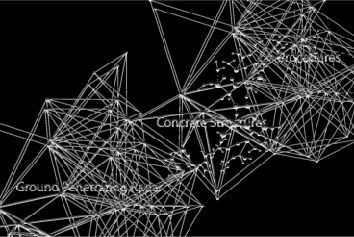GPR-C Procedures 1
Now that the first two knowledge blocks, GPR and Concrete Structures, have been transferred into the technician's mind, it's time to make some connections and learn how GPR-C specific radargrams are generated. These are the radargrams a technician will encounter in the field.
This is the foundation for the last course, Procedures 2, where we build the actual procedures that the technician will follow in the field.
This is the foundation for the last course, Procedures 2, where we build the actual procedures that the technician will follow in the field.

A few more words about this course
We then teach how different structural components and embedments generate their respective RG Features. It's these RG Features that are discerned during radargram interpretation.
Once a feature is discerned, a technician will suspect that a particular target generated it. This is the second step in the overarching Discern -> Suspect -> Test procedure.
It's important to understand how these features are generated so that when a technician comes across a target that has a variation in a something like shape, size, number, pattern and so on, they can still recognize (and therefore suspect) what it is. And they'll be able to work out why the radargram is slightly different than expected.
Once a feature is discerned, a technician will suspect that a particular target generated it. This is the second step in the overarching Discern -> Suspect -> Test procedure.
It's important to understand how these features are generated so that when a technician comes across a target that has a variation in a something like shape, size, number, pattern and so on, they can still recognize (and therefore suspect) what it is. And they'll be able to work out why the radargram is slightly different than expected.

